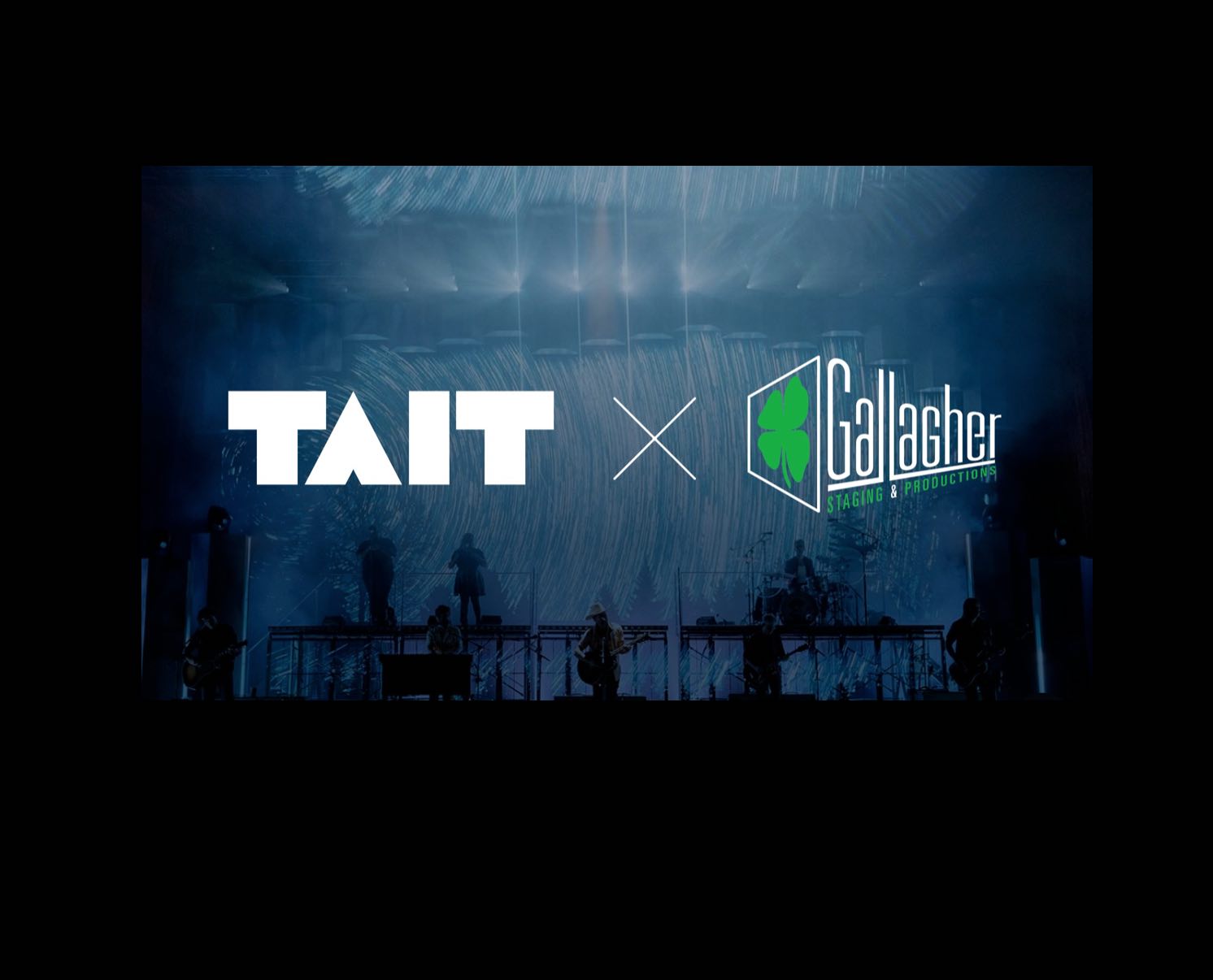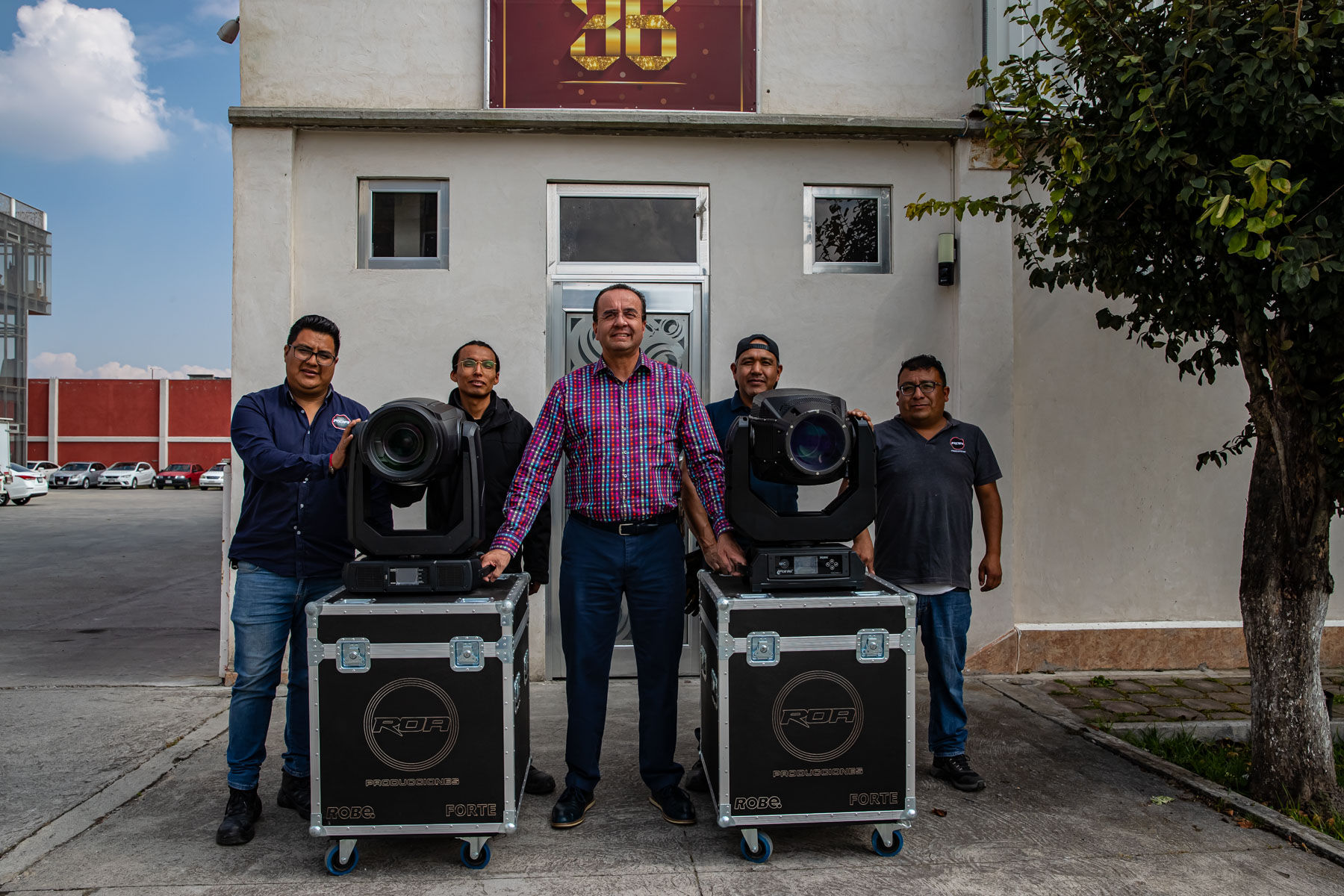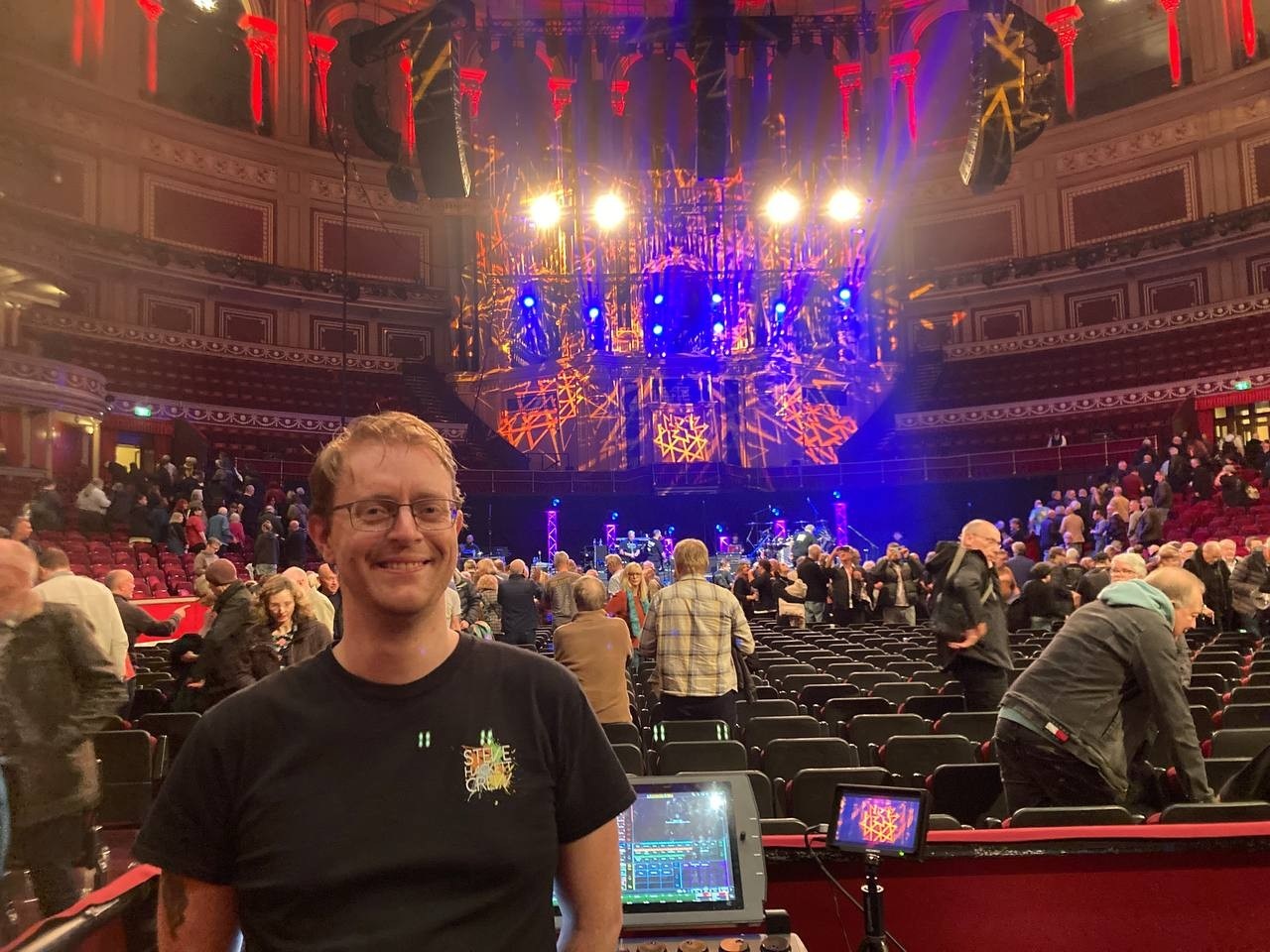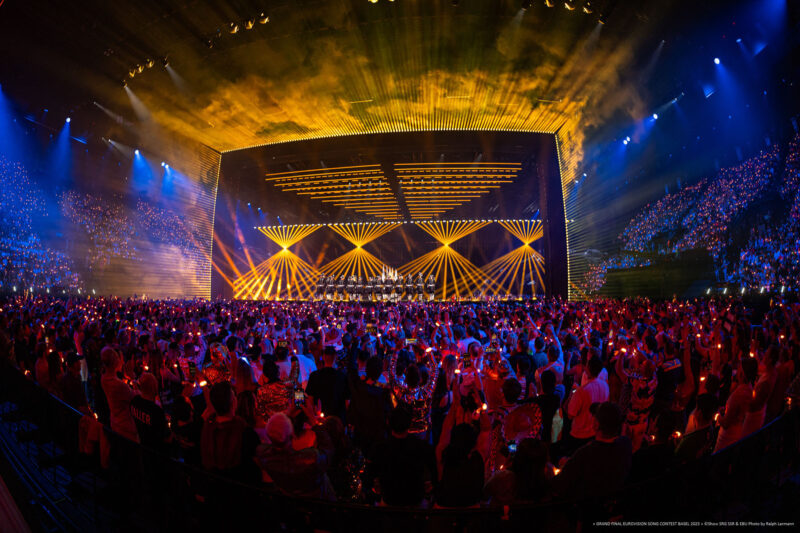
Robe was thrilled to be an official technical partner of Eurovision 2025 in Basel, Switzerland, where Lighting Designer Tim Routledge and his team, together with London UK-based lighting supplier Neg Earth Lights, helped deliver a truly outstanding production for the world’s largest live music broadcast event, staged this year at the St. Jakobshalle arena by Swiss host broadcaster SRG SSR, coordinated by the EBU (European Broadcasting Union).
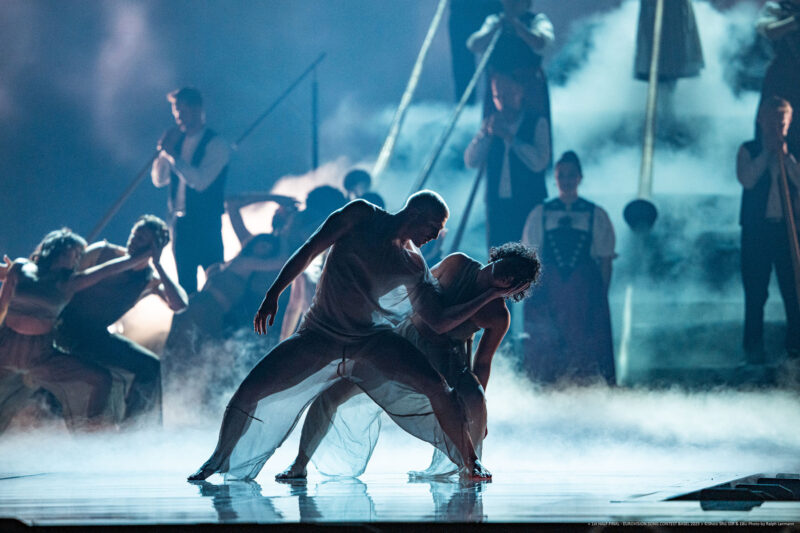
A stunning stage and production design by Florian Wieder included an impressive 750 square meters of transparent upstage LED screen, striking mountain set pieces and a fabulous 3-dimensional industrial scale video frame at the front which defined the space. This worked in conjunction with a 250 square meter black video floor, assorted other video and mapped surfaces including scenic mountains plus approximately 4,500 lights … to deliver nearly 50 distinctive individual performance environments.
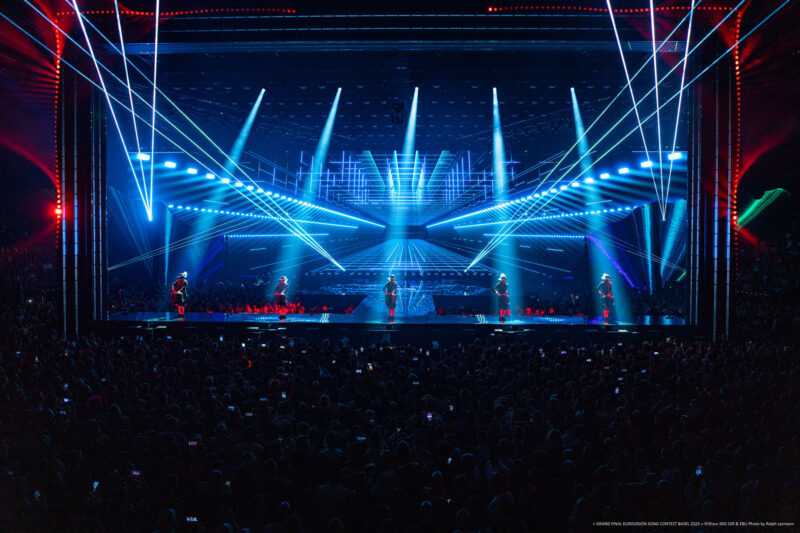
The Robe elements included 180 SVB1 and 72 iForte LTXs moving lights, plus 36 SvoPatt static multi-source units and 40 LEDBeam 150s which were ensconced in the set. The lighting system was actually ground supported to gain height and additional weight loading, although you would never have thought that from watching the final show thanks to some slick work by Johannes Schau from BigRig. The Robe iFortes were all used for key lighting, with some running on 12 RoboSpot remote followspot BaseStations.
These Robe assets helped Routledge ramp up the energy, glitz, glamour, and zaniness of an array of highly individually presented songs, meeting the ambitious visual demands of 37 competing delegations, whittled down to 26 finalists competing for the 2025 title. On top of these, across the two televised Semi-Finals and Grand Finale were an additional 11 show openers and interval acts with full stage and light shows.
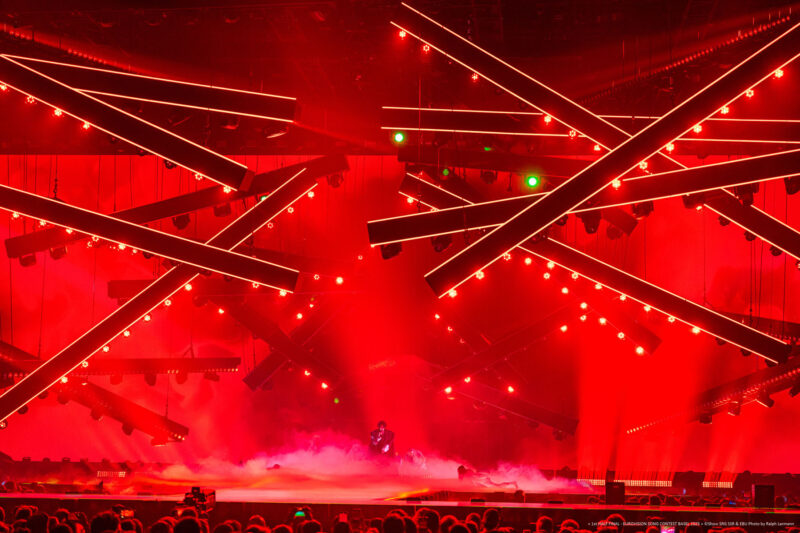
Routledge had previously lit Eurovision 2023 in Liverpool, a critically acclaimed show co-hosted by the UK and Ukraine who were the 2022 winners, and he was delighted to be back as part of the winning technical /creative production bid for this one.
The SVB1s were rigged prominently on the over-stage flying trusses, positioned closely together for max effect and utilized for a range of full-on whizzy pixel and strobing effects to gently undulating kinetic chases as well as contributing to the numerous beamy looks that dominated the night. “They look phenomenal especially when bunched up tightly like that,” commented Routledge.
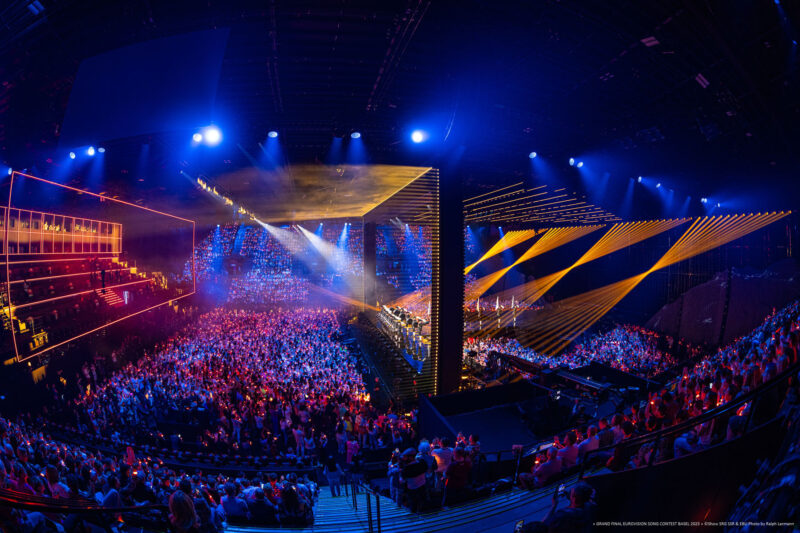
Twenty-four over-stage trusses were all on an automation system, allowing Routledge to create different architectural looks for each artist, boosting the dynamics of the space, while the depth was further accentuated by the considerable number of lights rigged upstage of the screen. The surface could be revealed or melted away with lighting according to the overall visual look of each participant.
The SvoPatts were rigged upstage, positioned for throwing blocks of high-quality light into this area below the depth. This new Robe product features nine individual modules each containing seven 40W RGBW multichips and a center pixel also with a 200W white LED strobe. The modules can be used in beam, wash, or effects mode and the fixture generates over 75,000 lumens output at the integrating sphere. The units were hidden out of shot, but contributed some significant work behind the set, punching in volumes of light right behind the physical mountains. “It was more about getting a volume of light in the right place than it being flashy and in-the-face with them in this context,” explained Routledge.
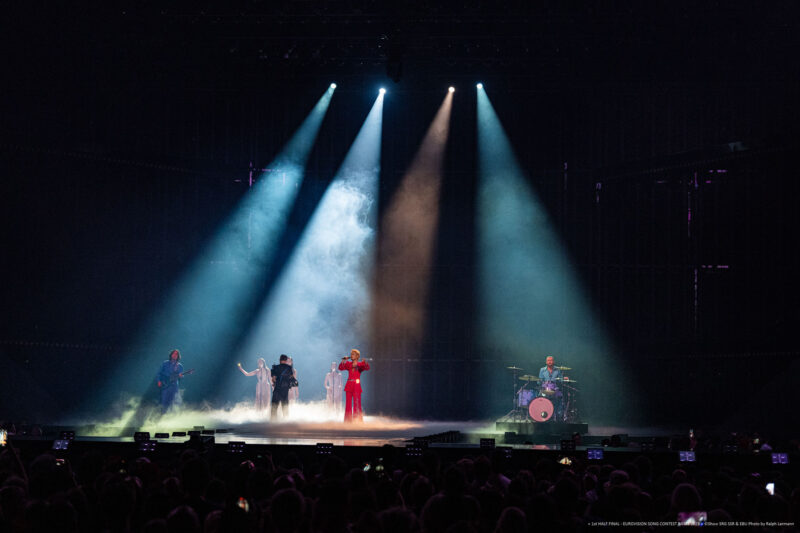
The SVB1 is a compact moving head version consisting of one single SvoPatt module and is also new, making it exciting to have them working on an event of this profile. iFortes were positioned all over the rig for multi-angle coverage and, as said earlier, they were used for most of the follow spot work and all the essential key lighting. This has been Routledge’s fixture of choice for the task since the product was launched in 2023. “They are bright, the CRI is better than any other fixture I’ve used, and they are reliable,” he confirms, adding, “Right now, there isn’t a better key light out there on the market.” He has also used RoboSpot remote followspot systems on several major TV shows and he prefers remote follow systems that have a human physical operator controlling the light source.
The challenges of being part of the creative team on a show like this are complex. While there is a good budget, the scale of the show and achieving – and managing – the multiple and very ambitious expectations need judicious decisions. The required attention to detail is demanding and an immense volume of information needs processing methodically and practically. Multiple production disciplines are closely aligned and are working both interdependently and harmoniously; the schedule on site is very intense as is the pressure. “Doing a Eurovision Song Contest is a lot of hard work, so you must want to be there, teamwork is vital, and on top of that, we have fun as well as delivering our best imaginative ideas … because this is the spirit of Eurovision,” elucidated Routledge.
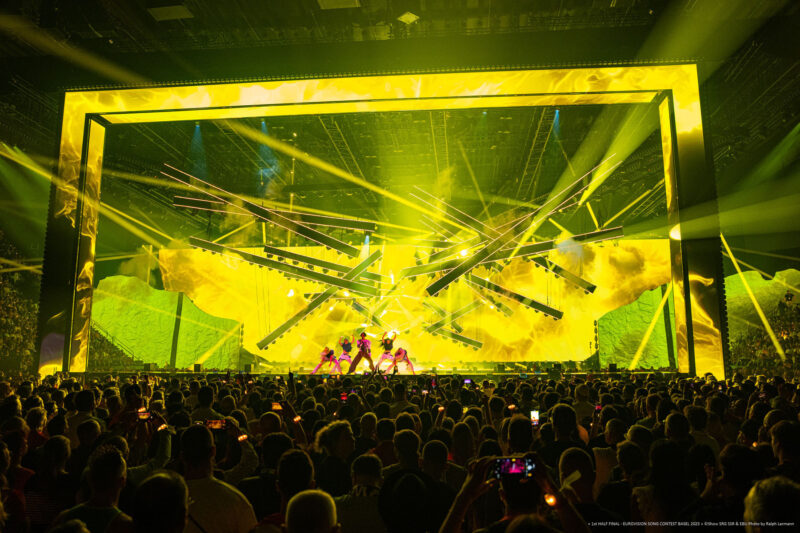
This year, Routledge managed a bigger core team of 14 people than he had in Liverpool as the lighting control department was also in charge of programming the playback video content for all the delegations. Routledge’s gaffer was Keith Duncan with Mark Henry as his best boy, James Scott and Morgan Evans were his two associate lighting designers. The Programmers were Alex Mildenhall and Tom Young on moving lights, with Marc Nicholson on key lights, working closely with overnight Programmers Alex Passmore and Martin Higgins. Louisa Smurthwaite coordinated and called all the followspots coordinating with 14 professional operators from UK-based followspot specialist, Pro Spot.
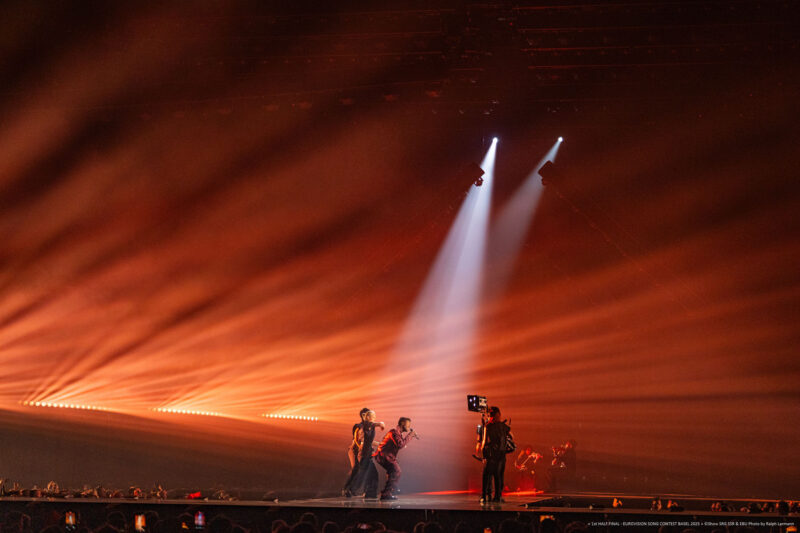
Routledge’s video department was led by producer Sam Lisher working alongside Programmer / Technicians Andy Coates, Luke Collins, and Emily Malone. Neg Earth’s Lighting Project Manager was Lindsey Markham who managed the technical details and lighting crew working under Keith Duncan. They were part of a 250-person show ‘run crew’ who ensured that the multicamera extravaganza – directed by lead Multicamera director Robin Hofwander – ran seamlessly and spectacularly on the night.
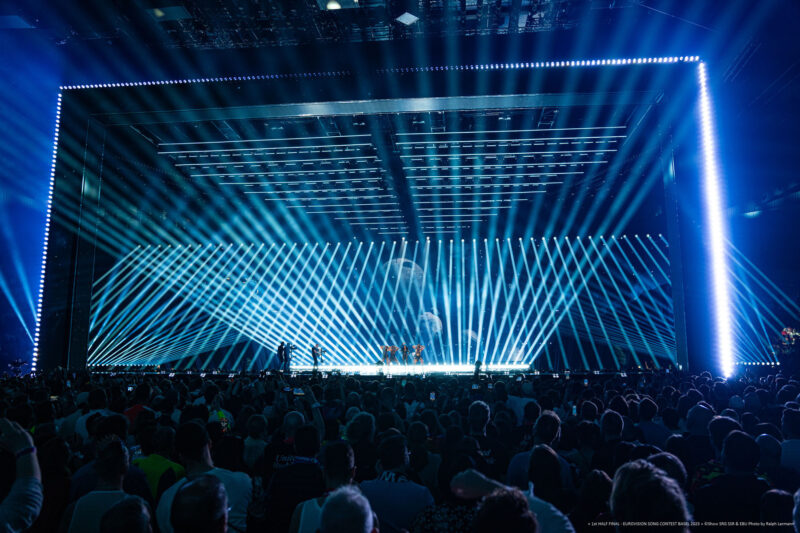
Eurovision 2025 – the 69th edition of this legendary song contest event – was a fabulous fusion of music, madness and magic enjoyed live by approximately 6500 people in St. Jakobshalle arena; with 36,000 watching on giant screens in the adjacent football stadium serving as an ‘overflow’ area for the broadcast that was seen by an estimated 170 million viewers worldwide.
The winner was Austria’s JJ (Johannes Pietsch) with “Wasted Love”, an all-action operatic style ballad set during a storm at sea, with a hugely cinematic presentation packed with moody contrasts and stark monochromatic moments – one of the most interesting and eccentric presentations from an evening of eye-popping scenographic surprises.
Photos: By Ralph Larmann
Further information about Robe: www.robe.cz
